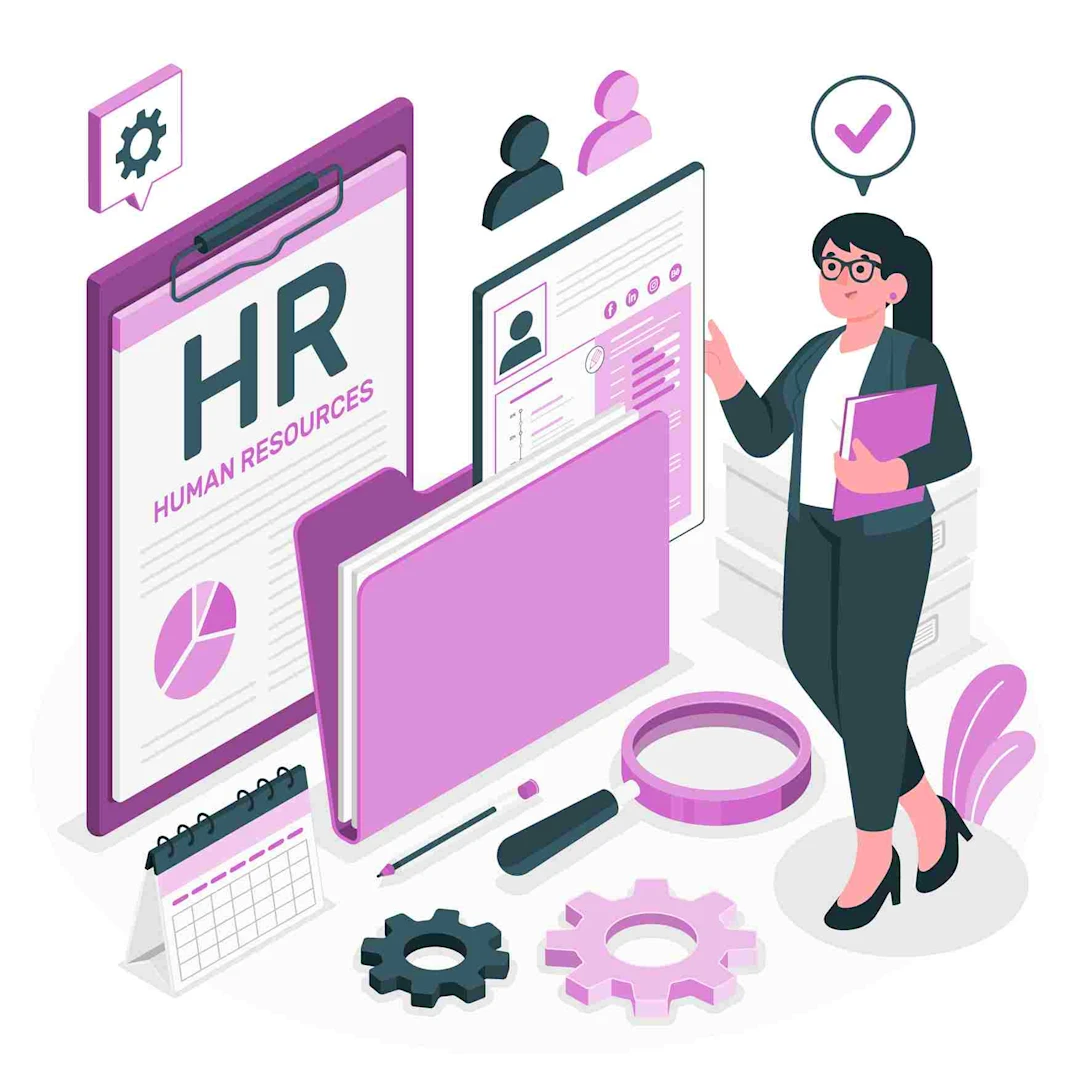
HRM vs HRD: Definitions And Key Differences
Human Resource Management (HRM) focuses on structured systems for managing employees, handling staffing, compensation, and work roles for efficiency.
Human Resource Development (HRD), on the other hand, emphasizes identifying and fostering individual talents, enabling employees to enhance skills and contribute more effectively to organizational and personal growth.
What is HRM or Human Resource Management?
HRM is the strategic and coherent approach used to manage the most valued assets of an organization: the people. It involves proceeding with recruiting, hiring, training, developing, and retaining the best employees; while making sure that the employment laws and a fruitful workplace culture.
The ultimate goal of HRM is organizational strategy — to enhance HR work so that employees can perform efficiently in achieving an organization’s strategic mission.
Functions of HRM Human Resource Management (HRM)
Functions are divided into key activities because, for the success and growth of an organization, it must run smoothly. Following is the list:
Recruitment and Selection: Effective recruitment without effective HRM is not possible.
Training and Development: It includes training programs and other activities designed to enhance organization employee’s skills.
Compensation and Benefits: HRM establishes salaries, commission rates, and benefits according to industry standards.
Performance Management: HRM uses data to monitor worker performance and ensure that individuals are skilled and capable. HRM ensures healthy, cordial relations in an organization.
Compliance Management: It is the establishment of organizational rules to minimize risks and maintain ethical business operations.
Workforce Planning: Human Resource Management creates staffing strategies that meet the business's objectives in hiring so that it has personnel in place to meet goals.
Health and Safety: One of the important things in HRM is to keep employees safe and healthy.
What is HRD or Human Resource Development?
Human Resource Development (HRD) is a specific function of HRM that is primarily concerned with strengthening the skills, knowledge, and aptitude of the employees of an organization. It helps to identify chords inside of every person and give value to the individual in a place of function that is constantly growing. HRD's key components include training, development, career planning, coaching, mentoring, and organizational development. HRD satisfies the individual by assigning them responsibilities and new jobs, resulting in them being an asset to the firm.
Functions of Human Resource Development
The functions of HRD are aimed at development of employees and enlarging the productivity of organizations. The main functions include:
Training and Development: This is an effective way to improve current job performance and helps employees build skills for future roles.
Performance Appraisal: This is the process of evaluating the performance of employees and allowing them to enhance.
Career Development: This clarifies career paths and helps staff achieve them.
Succession Planning: This prepares employees to take on leadership roles.
Coaching and Mentoring: This can provide some assistance to support individuals' development both personally and professionally.
Organizational Development: These changes the company culture and structure to improve the way of working.
Key differences between HRM and HRD
Human Resource Management is the application of management principles to oversee the workforce of the organization. On the other hand, Human Resource Development is concerned with continuous improvement efforts to enhance the performance of employees within the organization. The key differences between the two have been mentioned below according to various aspects.
Aspect | HRM (Human Resource Management) | HRD (Human Resource Development) |
Definition | HRM is the management of people within an organization. | HRD focuses on developing employee skills and potential. |
Scope | Broader includes recruitment, compensation, and policies. | Narrower emphasizes training, learning, and growth. |
Goal | Organizational efficiency and compliance. | Employee and organizational development. |
Focus | Administrative and operational tasks. | Strategic development of human resources. |
Orientation | Reactive, addressing immediate organizational needs. | Proactive, preparing for future challenges. |
Time Frame | Short-term operational focus. | Long-term developmental perspective. |
Key Activities | Recruitment, payroll, employee relations. | Training, mentoring, career development. |
Beneficiaries | Organization-centric. | Employee-centric with organizational benefits. |
Nature of Function | Transactional and structural. | Transformational and developmental. |
Responsibility | Primarily HR department. | Involves managers and employees collaboratively. |
Key Similarities Between HRM and HRD
Employee-Centric: Both aim to improve employee satisfaction and efficiency inside the enterprise.
Organizational Goals: Align the workforce effort with the strategic goals of the organization.
Interrelation: HRM gives foundation whereas HRD develops skills within that foundation.
Adaptation to Change: Both strive for flexibility to adapt; for right now and what may come.
Encourage Engagement: Provide better specifics among workers to work their best.
Collaboration: Involve coordination of HR professionals, managers, and employees.
Conclusion:
Both HRM and HRD have a very crucial role to play in the management and the growth of the workforce of the organisation. Human Resource Management focuses on administrative functions such as recruitment, compensation, and policy enforcement, but Human Resource Development is focused on employee growth through training, development, and upgrading skills. Together, they offer a way to realize organizational objectives while maintaining a productive, engaged workforce. It is the combination of their efforts that creates a solid, agile, and innovative workplace culture that is essential for long-term success in any competitive field.




